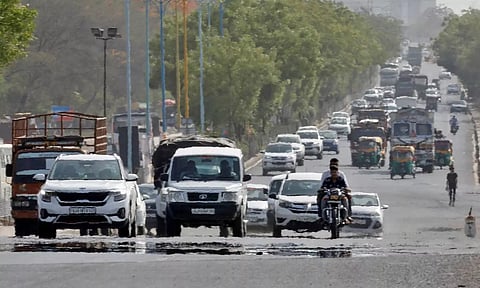

WASHINGTON: In the World Health Organisation’s Status Report on Road Safety for 2023, more than half of all UN member states report a decline in road fatalities. India is not one of them.
Globally, the total number of deaths in road accidents during the period 2010-2021 fell from 1.25 million to 1.19 million. But India’s road fatalities increased from 1.34 lakh to 1.54 lakh in those 11 years.
The expansion of India’s highway network and the growth in motorised transport do not entirely explain this anomaly.
Globally too, there has been a doubling of vehicle numbers and road networks. Yet, India’s share of road accident deaths has gone up from 11% in 2010 to 13%, despite having only 1% of the world’s vehicles.
So, where did we go wrong? Simply put, we are cruising in the wrong direction. Worldwide, there has been a shift away from transportation policies skewed to speed, with the car at the centre, towards transportation for people, with safety as the main concern. India, on the other hand, is still charmed by fast highways and fast cars without giving equal heed to safety as a priority.
Speed, as we know, kills. The latest Road Accidents in India report by the Ministry of Road Transport and Highways (MoRTH) says there were 1.68 lakh fatalities in a total of 4,61,312 road accidents in calendar year 2022. That’s 53 crashes per hour and 462 deaths per day, up 9.4% over the previous year. In macroeconomic terms, with 66.5 per cent of the deaths falling in the 18-45 year bracket, road fatalities are said to translate to a 5 per cent loss to the nation’s GDP.
Clearly, the government’s commitment to road safety has not kept pace with Nitin Gadkari’s fervour to build eight-lane highways, a fact he himself acknowledged while releasing the data back in October. Given the direction in which we’re going, it seems impossible that India will meet the United Nations' goal of halving road accident deaths by 2030.
While expansion of the highway network has been impressive, it ought to have been accompanied by equally vigorous enforcement of safety policies. Our infrastructure building efforts and vehicle design policies privilege speed over safety. There’s no other reason why 55 per cent of road fatalities should occur on highways although they are just 5 percent of the total road network in the country. Over-speeding and wrong-side driving, both of which are common highway phenomena, account for 76.6 percent of fatalities.
Sure, several safety initiatives have been taken up in accompaniment with highway building, broadly following the contours of the four Es: Education, Engineering, Enforcement, and Emergency care.
The amendment to the Motor Vehicle Act in 2019, mandating electronic monitoring and stiff penalties for violations, was one such proactive step. The ban on liquor vends in the vicinity of highways is another.
Urban administrations have chipped in with stricter policing of drunken driving. But road safety efforts ought to go farther, wider, and deeper.
The WHO’s Save Lives strategy recommends working on six fronts: Speed management, fair and firm rule enforcement, coordination of multiple agencies, infrastructure design, vehicle safety standards, and post-crash survival systems.
This 360-degree strategy pulls in a lot more elements into the safety policy: data analytics, automobile software, monitoring ubiquity, inter-agency connectivity, sidewalk design, and road alignment, and even driver psychology. It would certainly be fruitful to rope in this impressive arsenal of tools to make our highways safer.